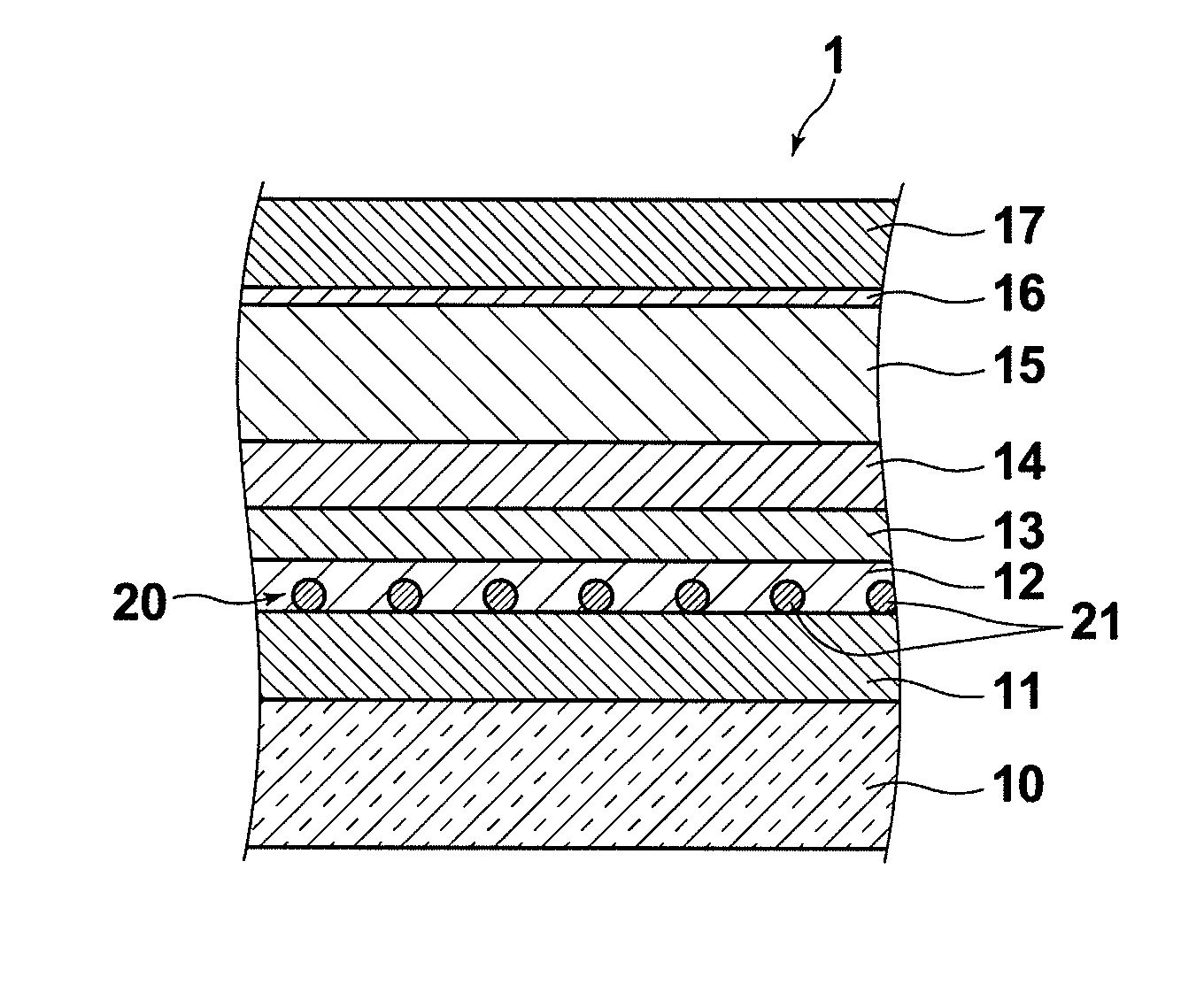Organic electroluminescene device
a technology of electroluminescence and organic el, which is applied in the direction of discharge tube luminescnet screen, organic semiconductor device, discharge tube/lamp details, etc., can solve the problems of difficult practical use of organic el, degraded light emission performance, low durability, etc., and achieve enhanced fluorescence and plasmon-enhanced organic electraluminescence
- Summary
- Abstract
- Description
- Claims
- Application Information
AI Technical Summary
Benefits of technology
Problems solved by technology
Method used
Image
Examples
first embodiment
[0041]FIG. 1 is a cross-sectional view of organic EL device 1 according to a first embodiment of the present invention, schematically illustrating the structure thereof.
[0042]Organic EL device 1 of the present embodiment includes transparent substrate 10, formed of a glass or the like, on which anode 11 having an optical transparency, hole injection layer 12, hole transport layer 13, light emitting layer 14, electron transport layer 15, electron injection layer 16, and cathode 17 are laminated in this order. Device 1 further includes a metal structure 20 formed of metal fine particles 21 that generate plasmon resonance by the light emitted from light emitting layer 14. Metal fine particles 21 are disposed so as to contact the surface of anode 11 and hole injection layer 12, which is a conductive organic layer, is filled between metal fine particles 21. As for metal fine particles 21, particles having a scattering cross section σS with respect to emission light emitted from light emi...
second embodiment
[0064]FIG. 3 is a cross-sectional view of organic EL device 2 according to a second embodiment of the present invention, schematically illustrating the structure thereof. Components identical to those of the organic EL device 1 in drawings that will be described hereinafter are given the same reference numerals.
[0065]Organic EL device 2 differs from organic EL device 1 according to the first embodiment in that metal structure 20 constituted by a plurality of metal fine particles 21 is disposed inside of anode 11 instead of on a surface of anode 11. In organic EL device 2, metal fine particles inside of anode 11 are disposed at a distance from light emitting layer 14 close enough to induce a plasmon resonance by the light emitted from light emitting layer 14.
[0066]In the present embodiment, anode 11 is formed of a transparent conductive material that does not generate a surface or local plasmon by the light emitted from light emitting layer 14 or a metal which is more unlikely to gen...
examples
[0072]Examples and Comparative Examples of the organic EL device of the present invention were produced and the following experiments were performed.
PUM
 Login to View More
Login to View More Abstract
Description
Claims
Application Information
 Login to View More
Login to View More - R&D
- Intellectual Property
- Life Sciences
- Materials
- Tech Scout
- Unparalleled Data Quality
- Higher Quality Content
- 60% Fewer Hallucinations
Browse by: Latest US Patents, China's latest patents, Technical Efficacy Thesaurus, Application Domain, Technology Topic, Popular Technical Reports.
© 2025 PatSnap. All rights reserved.Legal|Privacy policy|Modern Slavery Act Transparency Statement|Sitemap|About US| Contact US: help@patsnap.com



